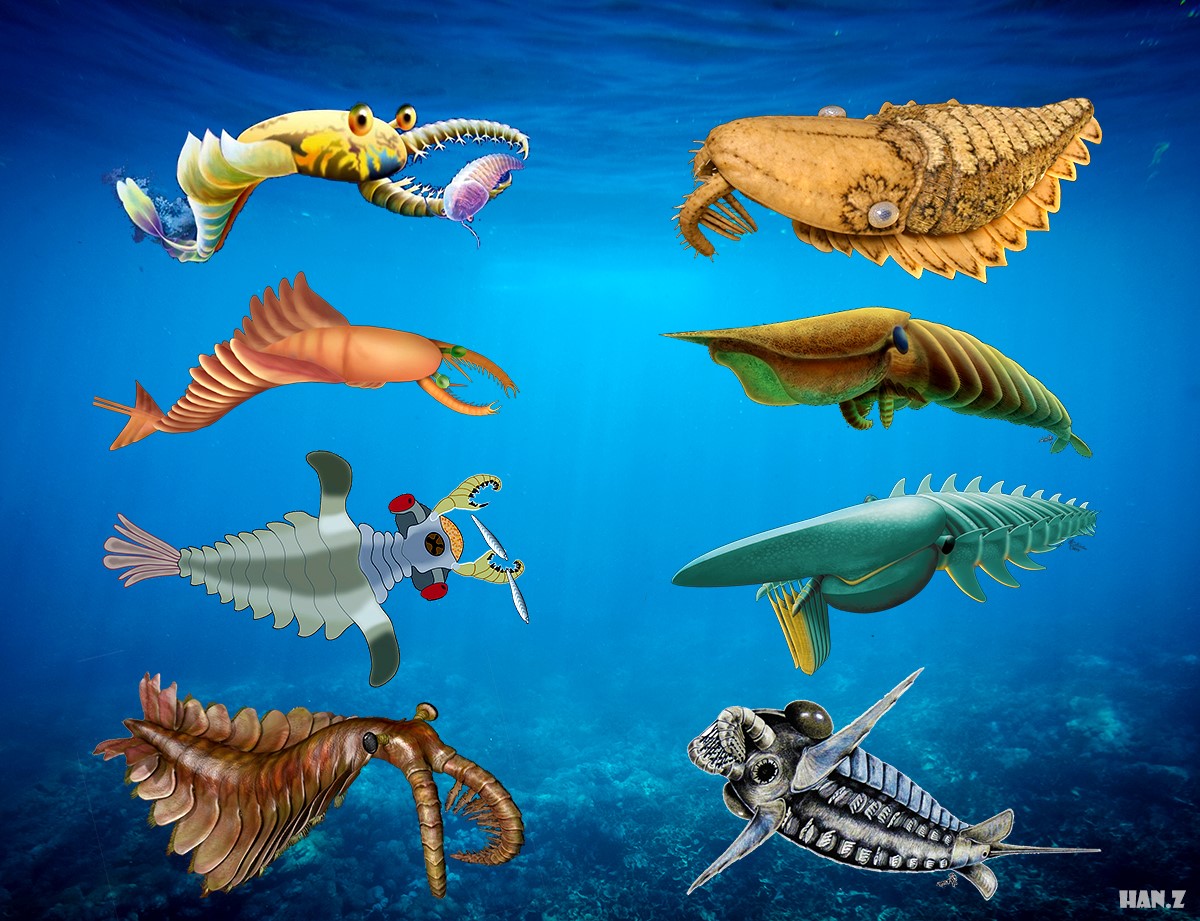
Radiodontans - Giant predators in Paleozoic seas
Recorded in exceptionally preserved Lagerstätten, the radiodontans (including anomalocaridids) are cosmopolitan, soft-bodied, stem-group arthropods that inhabited Paleozoic seas. They are notable for their unique morphology, peculiar ecology and basal position in arthropod evolution. The early Cambrian Chengjiang Lagerstätte has yielded some of the oldest radiodontans, including three unquestionable taxa – Anomalocaris saron, Amplectobelua symbrachiata and Lyrarapax unguispinus. However, recent discoveries of the Burgess Shale Hurdia Walcott, 1912 and the Fezouata Aegirocassis benmoulae Van Roy et al., 2015 highlight the presence of another radiodontan group (Hurdiidae) characterized by a tripartite head sclerite complex consisting of one central element and a pair of lateral elements.
Recently, Dr. ZHAO Fangchen and PhD. candidate ZENG Han from Nanjing Institute of Geology and Palaeontology, Chinese Academy of Sciences and their colleagues reported six morphotypes of possible hurdiid head sclerite elements from the Chengjiang Lagerstätte, some of which are closely associated with other typical radiodontan body parts. These sclerite elements provide detailed anatomy, such as mammillary tubercles and soft tissue reticulate structure, to help understand the morphology and biology of all hurdiid head sclerites. A common single dorsal plate in Anomalocaris saron and Amplectobelua symbrachiata is confirmed. Although the morphologically diverse central and lateral elements of the Hurdiidae and the conserved dorsal plate of the Anomalocarididae and Amplectobeluidae reflect a major distinction in radiodontan body plans, they share a fundamental structure of double layers of cuticle. The Chengjiang specimens not only clarify the morphology and biology of the radiodontan head sclerites in general, but also illuminate the diversity and disparity of radiodontans in their early evolutionary history.
This research was funded by the National Natural Science Foundation of China, the Ministry of Science and Technology of China, and the Chinese Academy of Sciences.
Article information: Han Zeng, Fangchen Zhao*, Zongjun Yin, Maoyan Zhu. 2017. Morphology of diverse radiodontan head sclerites from the early Cambrian Chengjiang Lagerstätte, south-west China.Journal of Systematic Palaeontology, doi: 10.1080/14772019.2016.1263685
